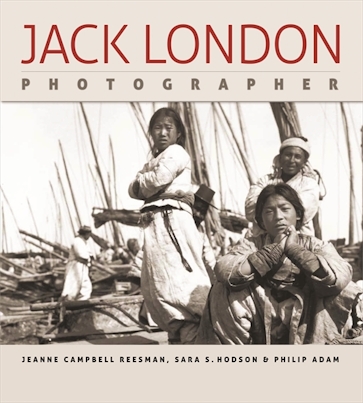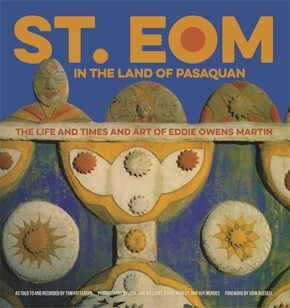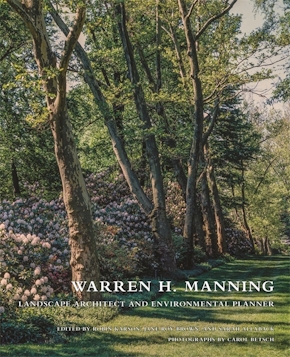Jack London, Photographer
Title Details
Pages: 288
Illustrations: 230 duotones
Trim size: 10.000in x 11.000in
Formats
Hardcover
Pub Date: 09/15/2010
ISBN: 9-780-8203-2967-3
List Price: $51.95
Subsidies and Partnerships
Published with the generous support of Mr. and Mrs. Craig T. Barrow
Related Subjects
PHOTOGRAPHY / Individual Photographers / General
BIOGRAPHY & AUTOBIOGRAPHY / Artists, Architects, Photographers
Jack London, Photographer
Skip to
- Description
- Reviews
- Awards
Jack London (1876–1916) remains one of the most widely read American writers, known for his naturalist fiction, socialist novels and essays, journalism, and the many adventures that he shared with the world. London was also an accomplished photographer, producing nearly twelve thousand photographs during his lifetime. Jack London, Photographer, the first book devoted to London’s photography, reveals a vital dimension of his artistry, barely known until now.
London’s subjects included such peoples as the ragged homeless of London’s East End and the freezing refugees of the Russo-Japanese War, the latter photographed on assignment for the Hearst Syndicate. For Collier’s magazine, London wrote his eyewitness account of the 1906 San Francisco earthquake and fire and returned two weeks later with his camera to document a city in ruins but slowly recovering. During his voyage aboard the Snark, London produced humane images of the South Seas islanders that contrasted dramatically with the period’s stereotypical portraits of indigenous peoples. In 1914 he documented the U.S. invasion of Veracruz during the Mexican Revolution. Although some of his images were used in newspaper and magazine stories and in his books The People of the Abyss and The Cruise of the Snark, the majority have remained unpublished until now.
The volume’s more than two hundred photographs were printed from the original negatives in the California State Parks collection and from the original photographs in albums at the Huntington Library. They are reproduced here as duotones from silver gelatin prints. The general and chapter introductions place London’s photographs in the context of his writings and his times.
London lived during the first true mass-media era, when the use of photographic images ushered in a new way of covering the news. With his discerning eye, London recorded historical moments through the faces and bodies of the people who lived them, creating memorable portraits of individuals whose cultural differences pale beside their common humanity.
This book is an unanticipated landmark, for London's groundbreaking work as a photojournalist has remained hidden until now. . . . London was a prescient, timely genius; his work helped define the photojournalistic form, a new idea, now seen as the window into contemporary life. The book's visual bounty seems endless.
—Library Journal (starred review)
Jack London is best known as a writer of red-blooded adventure tales. But he was also a journalist, traveler, social activist - and prolific photographer . . . The breadth of this book shows how far London would go for a good story.
—Los Angeles Times
This fascinating introduction will surprise many and spur further examination of this significant anthropological and historical visual archive.
—Clarice Stasz, author of Jack London’s Women
Jack London, Photographer demonstrates the truth of London’s claim to be a ‘professional photographer’ and provides readers with a fresh perspective, that of visual artistry, through which to view London’s writings.
—Donna M. Campbell, author of Resisting Regionalism: Gender and Naturalism in American Fiction, 1885–1915
Everyone knows that Jack London’s genius lay in the prose that flowed from his hand. But who could have imagined that his eye would be as powerful? London’s photographs are a remarkable discovery and his humanistic vision an important contribution to photography.
—Ken Light, photographer and director of the Center for Photography, University of California Berkeley Graduate School of Journalism
Jack London’s prose classics have overshadowed his camera work, but his photographs of London’s poor, the Russo-Japanese War, the San Francisco Earthquake, and ethnographic shots made during his voyages are all first class, too; and this masterful text-and-plates volume provides overdue recognition of them.
—ForeWord
London himself was always a story – and he comes across as a living presence among his photography. . . .This wonderful book, packed with London’s notes on the images he had taken so selectively, strongly communicates his unique humanity and his respect for people striving to live among battering biological and social forces.
—Ron Slate, author of The Incentive of the Maggot
In Jack London, Photographer, Reesman, Hodson, and Adam offer a rich and engaging text, which not only introduces London’s photographs—many for the first time—but, more importantly, contextualizes the photographs in terms of London’s larger body of work.
—Studies in American Naturalism
Winner
"Best of the Best" University Press Books for Libraries, American Library Association



